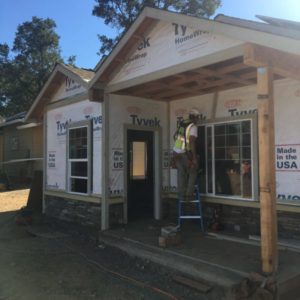Depending on which report you look at, U.S. labor shortages in the construction world are ranging from 140,000 to 200,000. Whatever the number is, it’s a big one. The good news is, that means there’s plenty of work, and construction is booming.
The bad news; without anyone to fill those vacancies, projects can’t meet timelines, costs go up and the overall economy loses out on economic gains from an industry that contributes more than $700 billion to the U.S. economy.
Opinions and theories on the shortages vary. No one can argue that the design and construction industry took one of the hardest hits from 2008-2010. Personally, I had a 6,500-square-foot mixed-use shell building on my hands and didn’t know if it was better to walk away or finish what we started.
During that two-year period, many skilled and unskilled workers lost their jobs and were forced to find work elsewhere. Most didn’t return. Baby boomers retired, and budget cuts eliminated programs like art and shop class in primary and secondary education programs. Combine this with the sometimes ill-directed push for four-year schools over vocational schools, and the shortage was compounded. More recently, immigration laws have changed, resulting in a smaller available workforce.
How many of you have ever needed an electrician; a plumber; someone to frame up something “real quick”? I get asked once a week for recommendations, and every single person whose contact information I forward is busy.
A family member’s church recently got a quote for painting. First off, it was excessively out of their budget. Second of all, the price was guaranteed for six months, but there wasn’t availability in their schedule for 12 months. Even in an age of technology, these needs and the skills that create them aren’t ever going to go away.
There are eight of us in Travois’ Design department. Just on my desk are 87 homes, a behavioral health center, a housing authority and a community center all under construction from the West Coast to the Great Lakes. Every single one could use more skilled hands, particularly framers, finish carpenters and concrete workers. If each of us anticipate $10 million in construction projects over the next two years with roughly 50 workers per $5 million, that’s somewhere in the neighborhood of 800 jobs.

Not to put down a college degree, but hefty student loans from four to six years of schooling aren’t necessarily going to bring in a higher paycheck or more opportunities. Budget cuts for schools have now created economic cuts for the future.
Want to start a handyman company? You’ll be booked every day. Take a second look at vocational schools and the Home Builders Institute that have apprenticeship programs. Check with your local employment agencies. The TERO office for the Wind River Reservation uses some of their fees to help generate a list of and set up workers with a basic tool set. If you’re a skilled tradesman or are considering becoming one, you can write your own ticket.
Want to go to California? Oregon? New Mexico? Your own backyard? Point the compass and take your pick.
Resources:
- The Legal Intelligence, “How to Cope With Construction Industry Labor Shortages.” By Joshua Lorenz, January 29, 2018
- Tradesmen International, “The Construction Labor Shortage: Where Did All the Skilled Labor Go?”
- Marketplace, “Home Depot Takes a Short at Tackling the Construction Labor Shortage,” By Renata Sago, April 30, 2018


